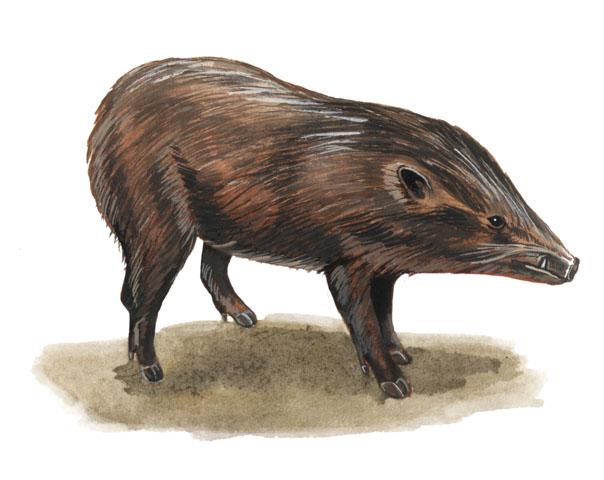Pygmy Hog (Sus salvanius) - Wiki Pygmy Hog
From Wikipedia, the free encyclopedia
[Photo] Pygmy Hog (Sus salvanius). Date 2006. Author Alessio Marrucci
Pygmy hogs (Sus salvanius) are an endangered species of small wild pig, previously spread across India, Nepal, and Bhutan but now only found in Assam. The current world population is about 100-150 individuals.
They are about 55 to 71 cm long and stand at 20-30 cm with tail of 2.5 cm. They weigh 6.6 to 11.8 kilograms. Their skin is dark brownish black and the fur is dark. Piglets are born grayish-pink becoming brown with yellow stripes along the body length. The head is sharply tapered and they have a slight crest of hair on the forehead and on the back of the neck. Adult males have the upper canines visible on the sides of the mouth. They live for about 8 years, becoming sexually mature at 1-2 years. They breed seasonally before the monsoons giving birth to a litter of 3-6 after a gestation of 100 days.
In the wild they make small nests made by digging a small trench and lining it with vegetation. During the heat of the day they stay within these nests.
They feed on roots, tubers, insects, rodents, and small reptiles. Efforts to breed them in captivity have been attempted. Conservation of the species has not been effective due to the lack of public support, unlike that for charismatic South Asian mammals like the Bengal Tiger or Indian Rhino. Their rarity contrasts greatly with the massive population of wild boars (Sus scrofa) in India.
http://en.wikipedia.org/wiki/Pygmy_Hog
| The text in this page is based on the copyrighted Wikipedia article shown in above URL. It is used under the GNU Free Documentation License. You may redistribute it, verbatim or modified, providing that you comply with the terms of the GFDL. |
